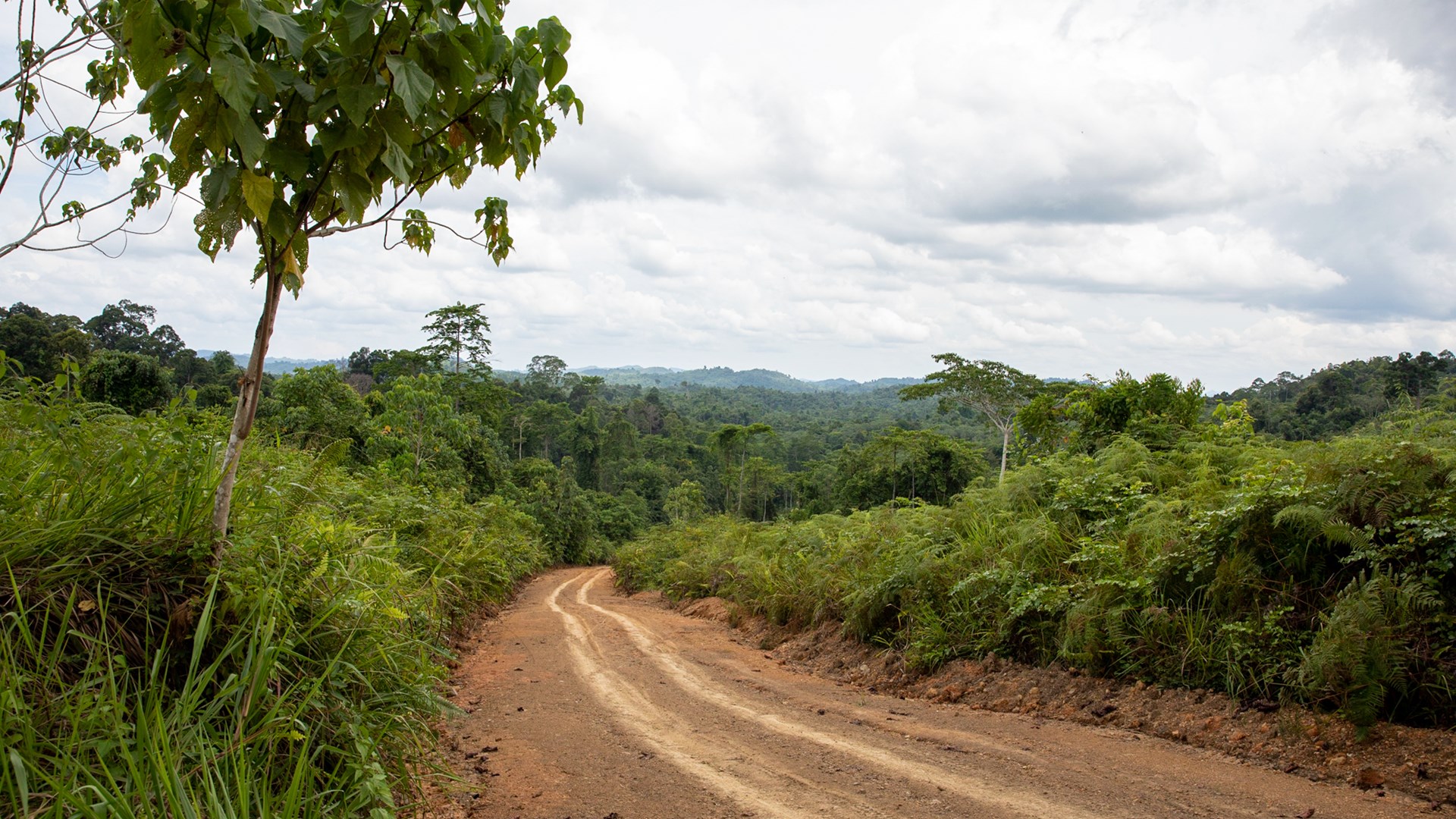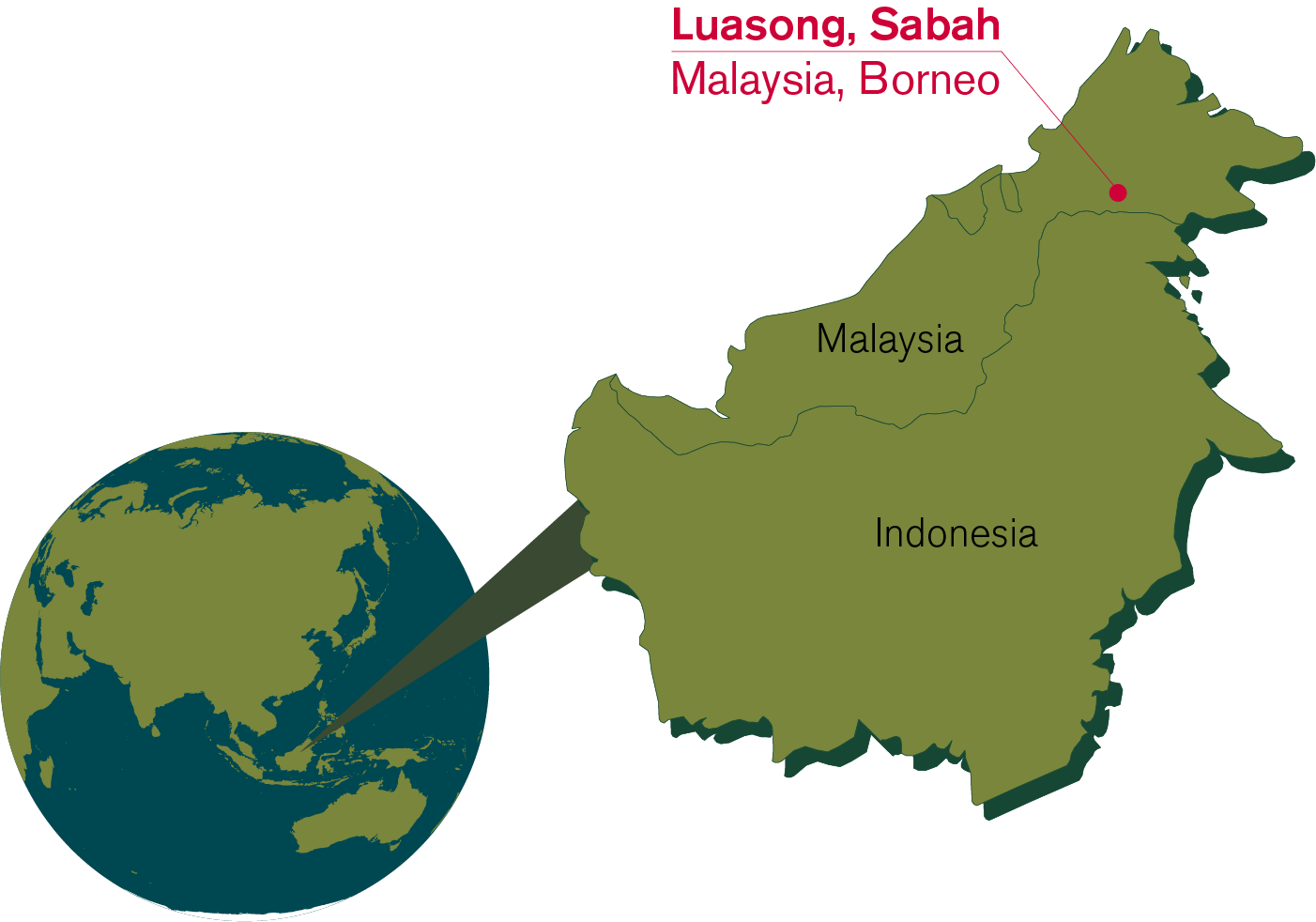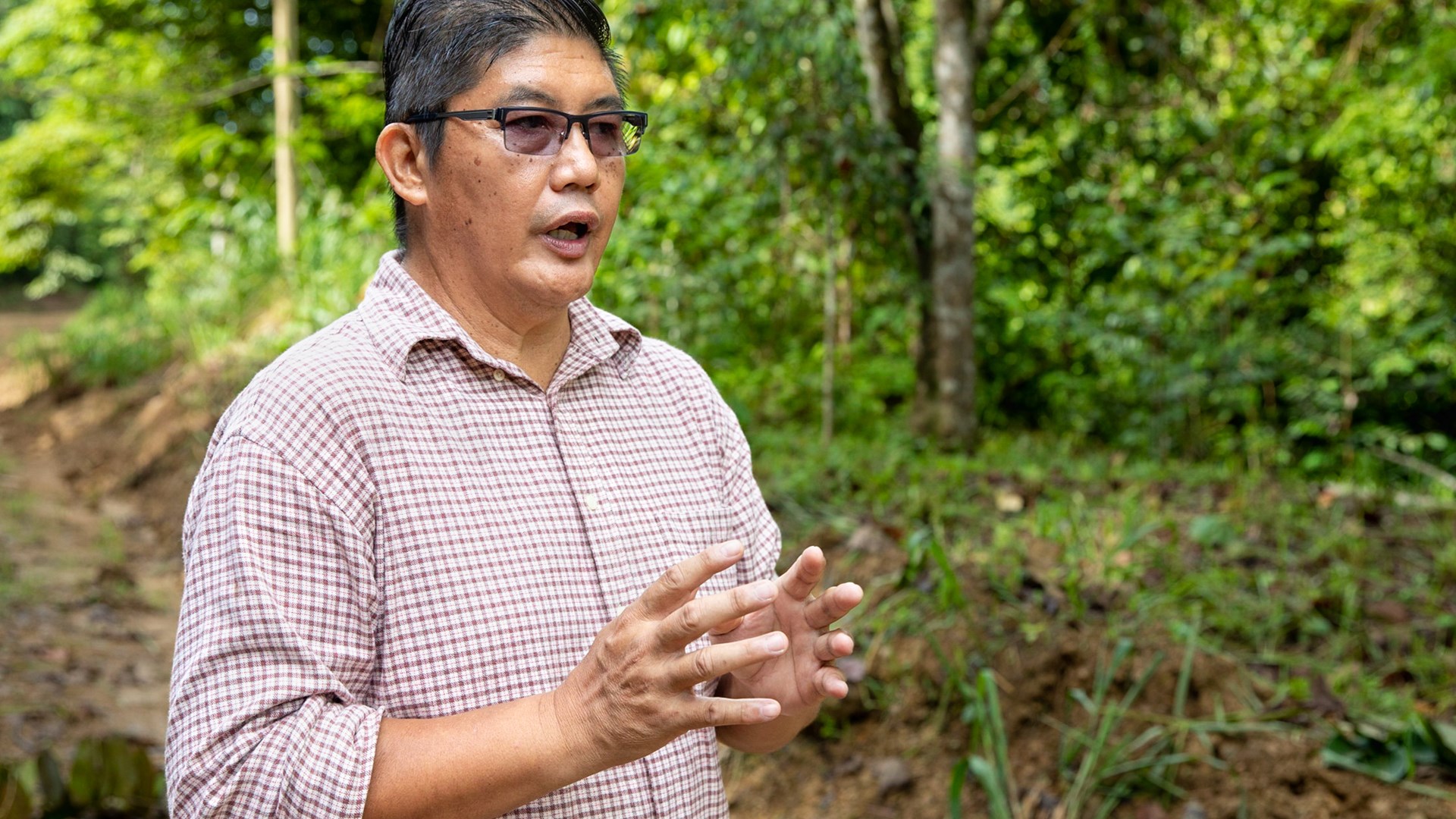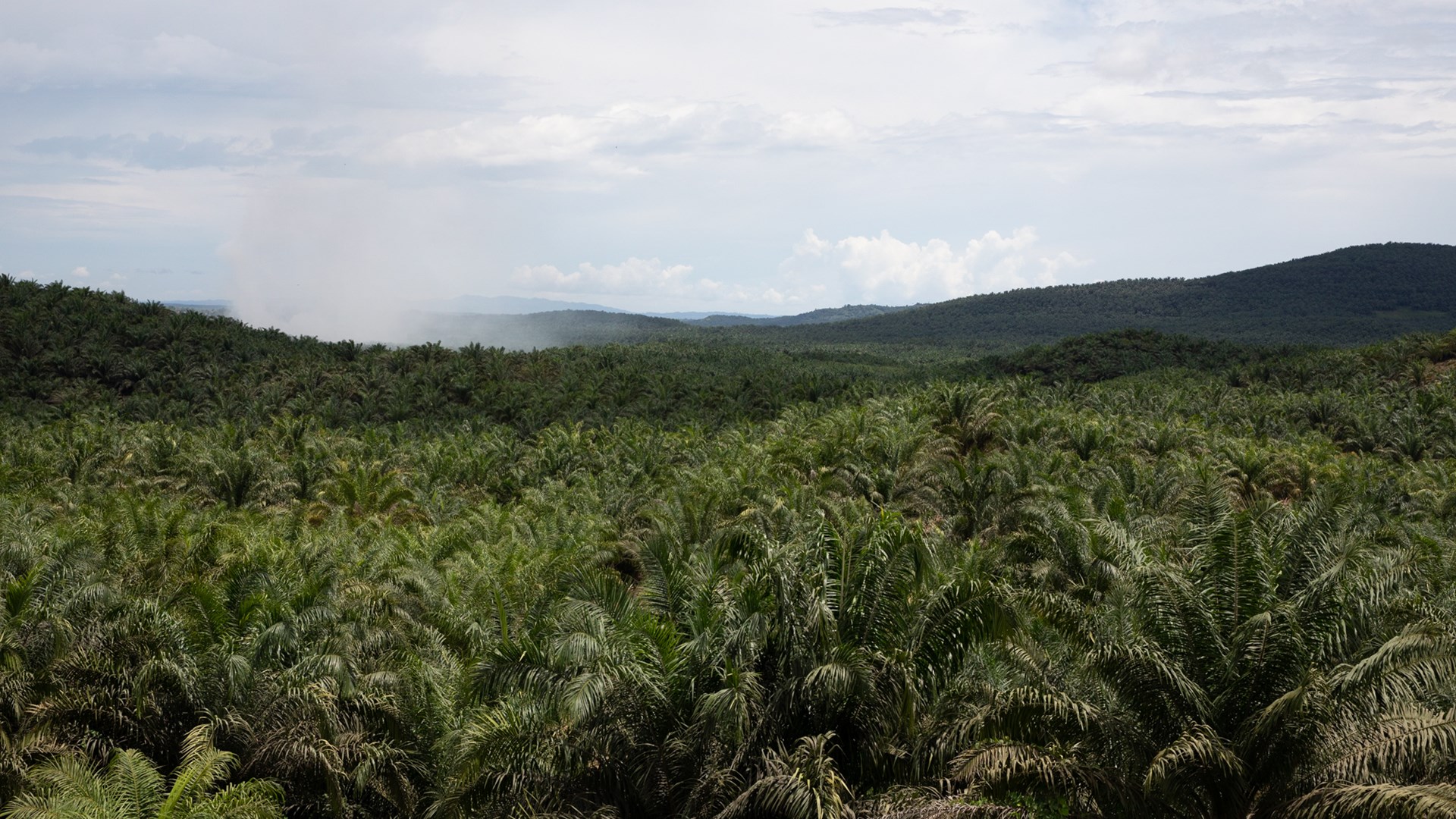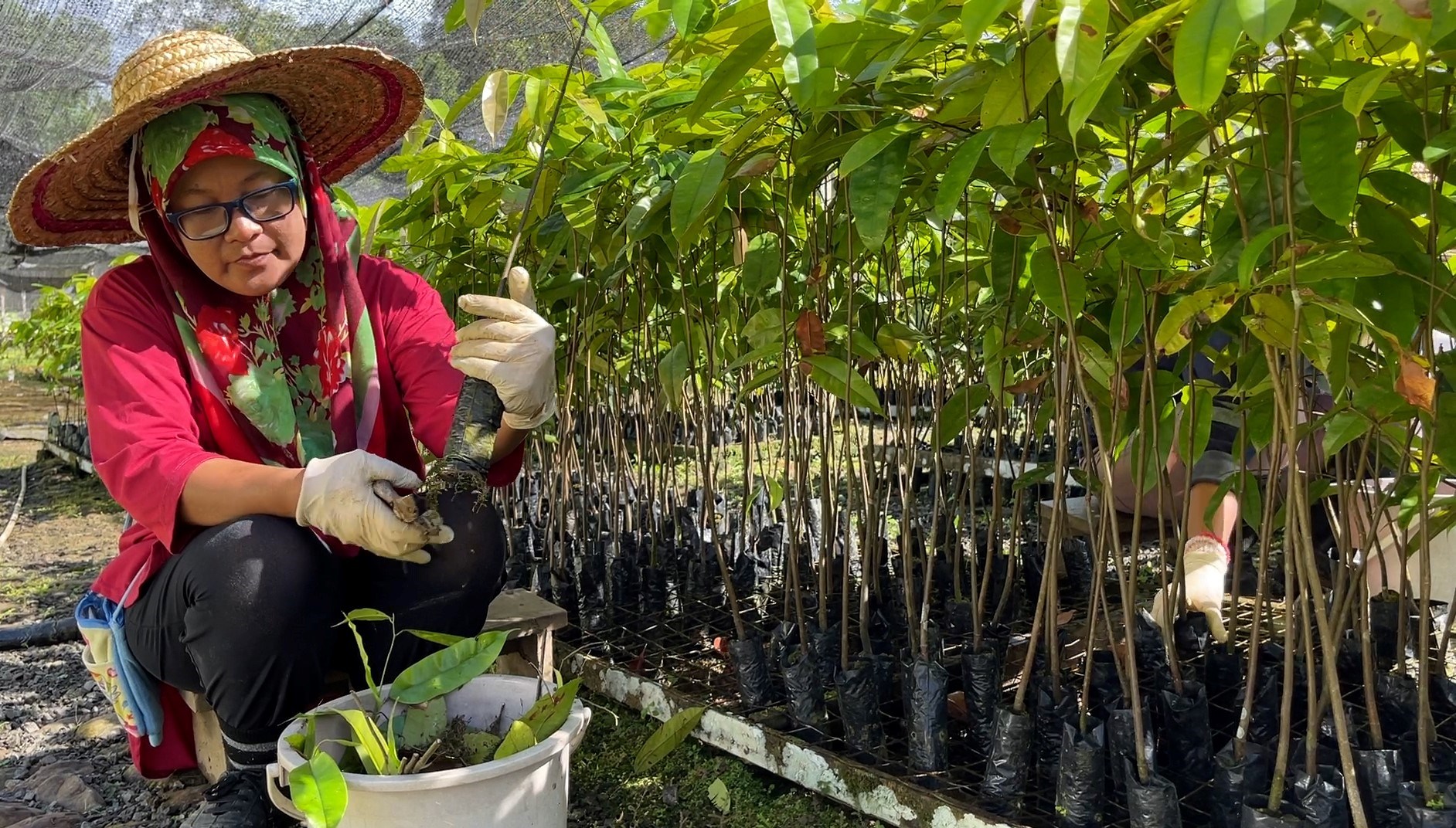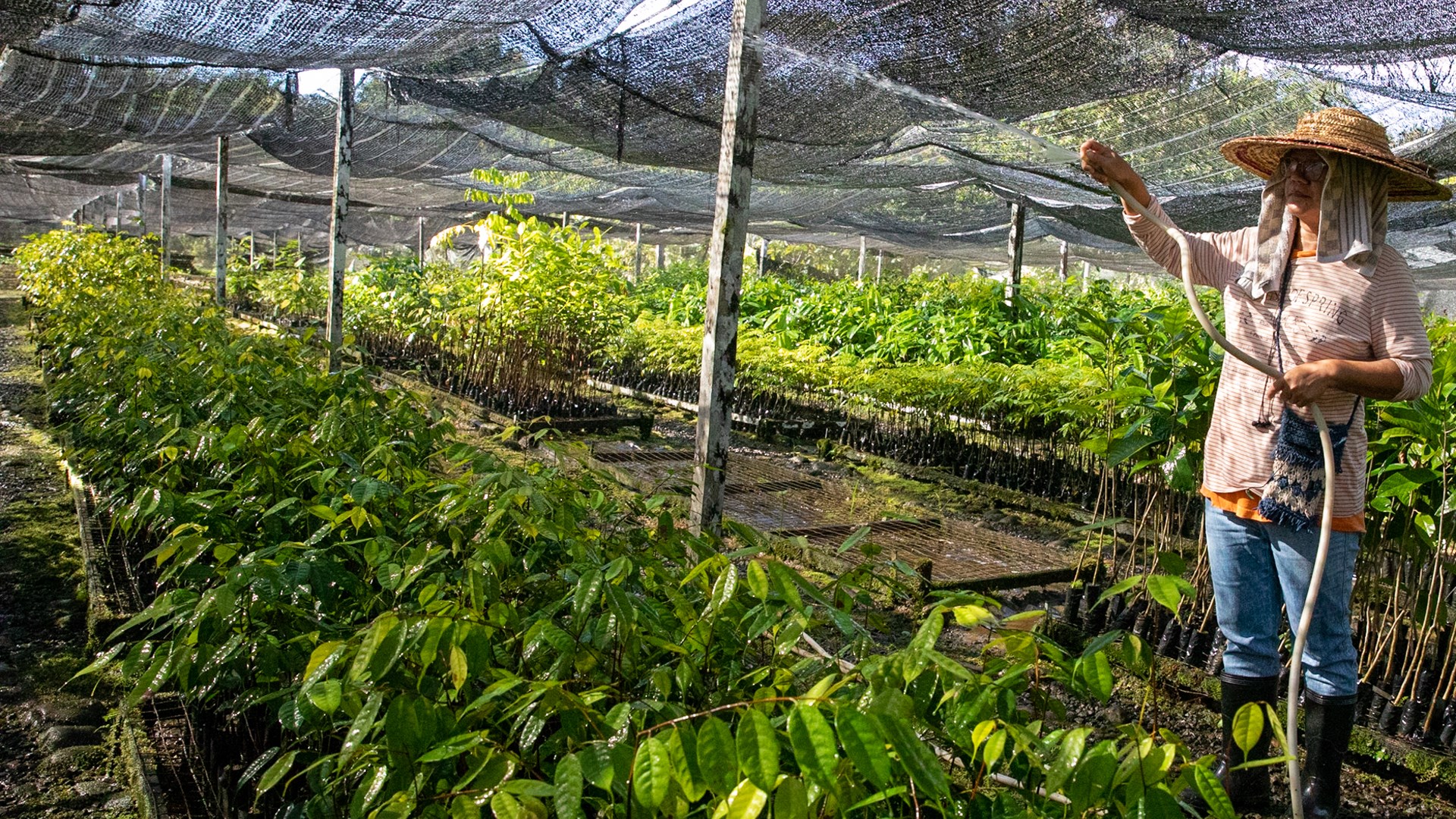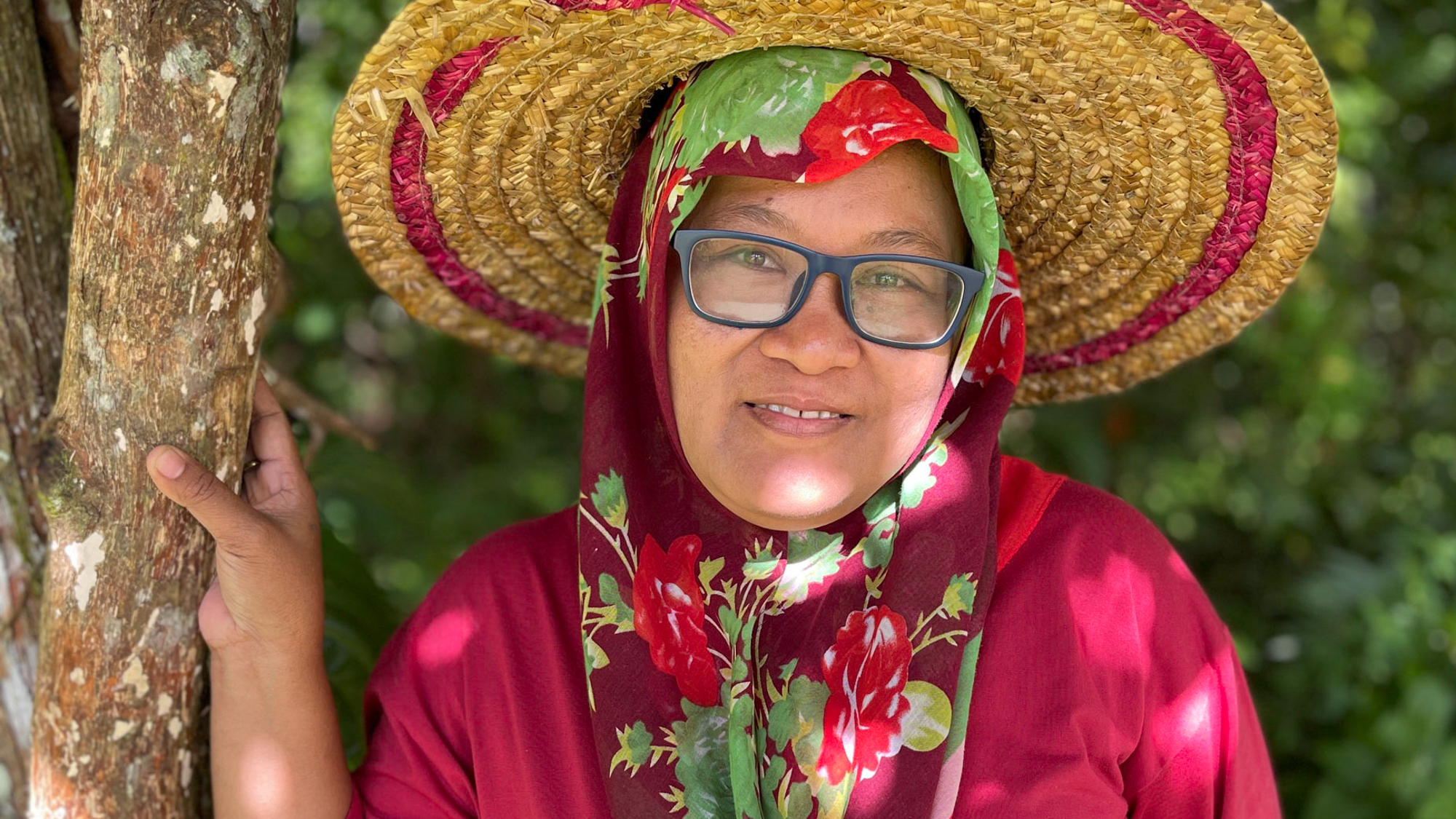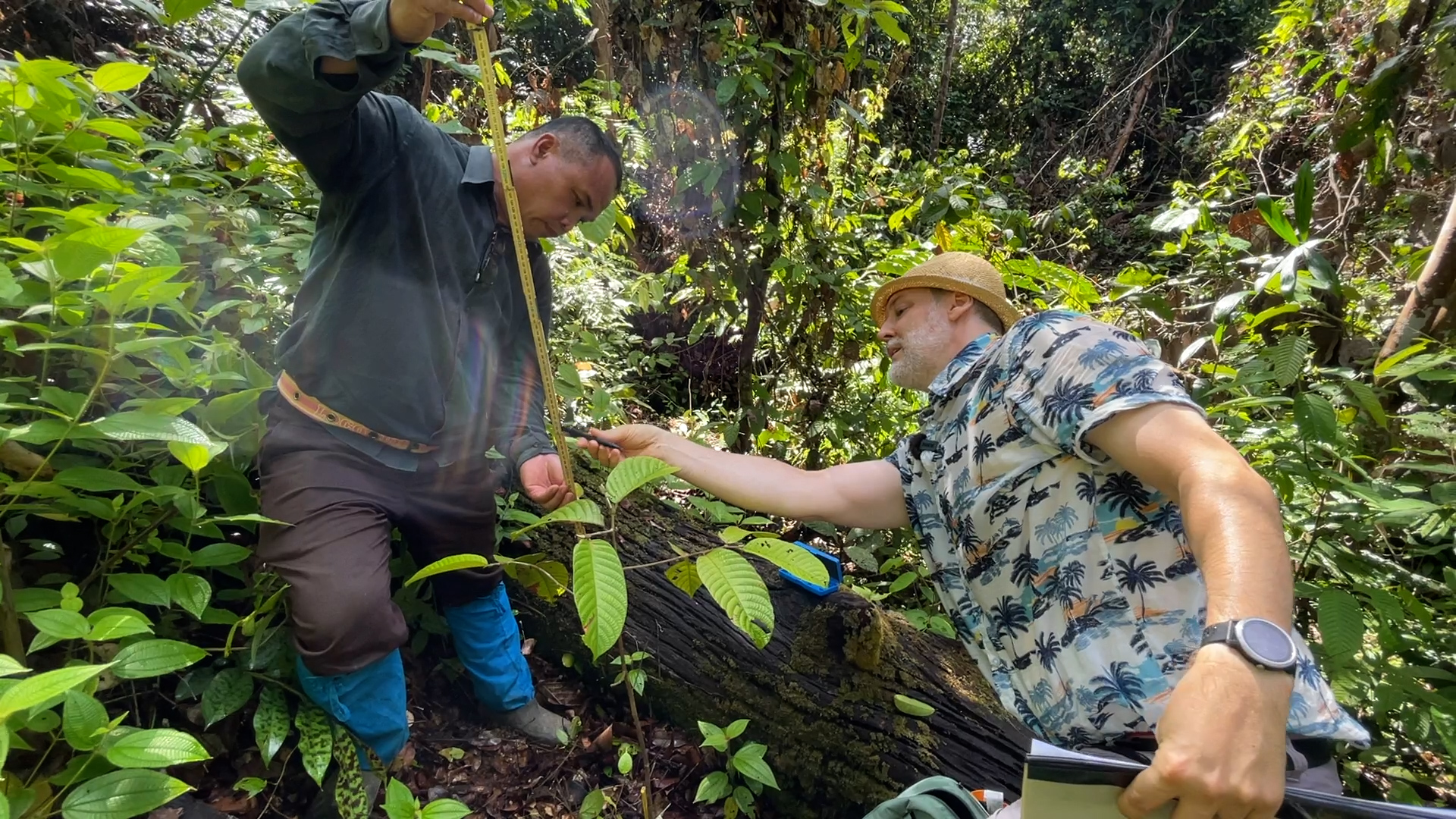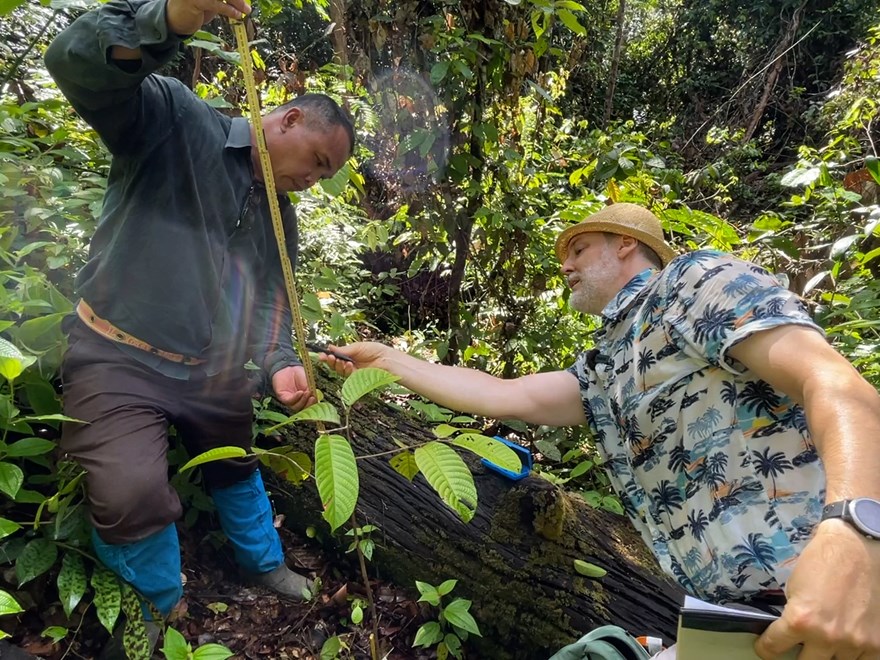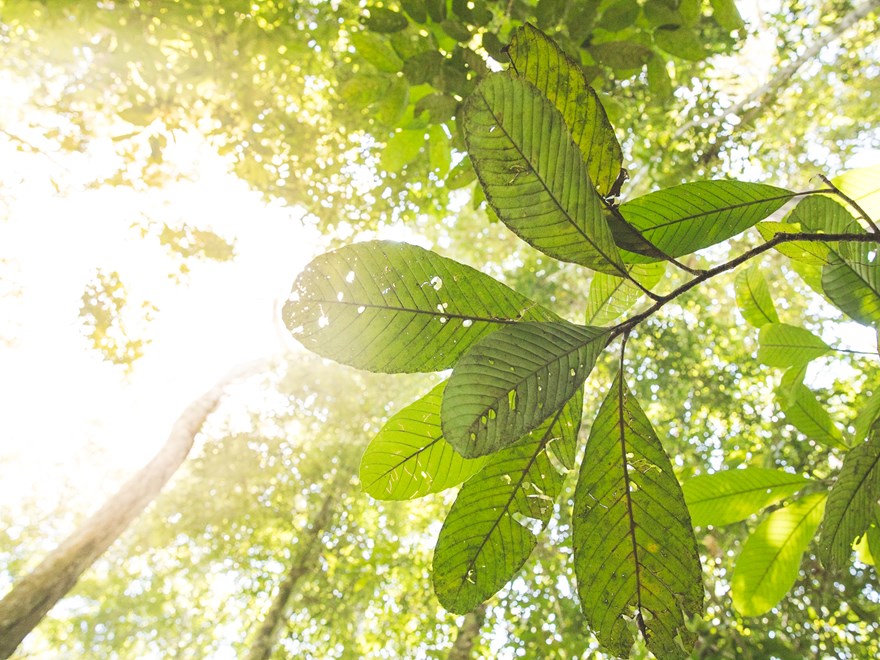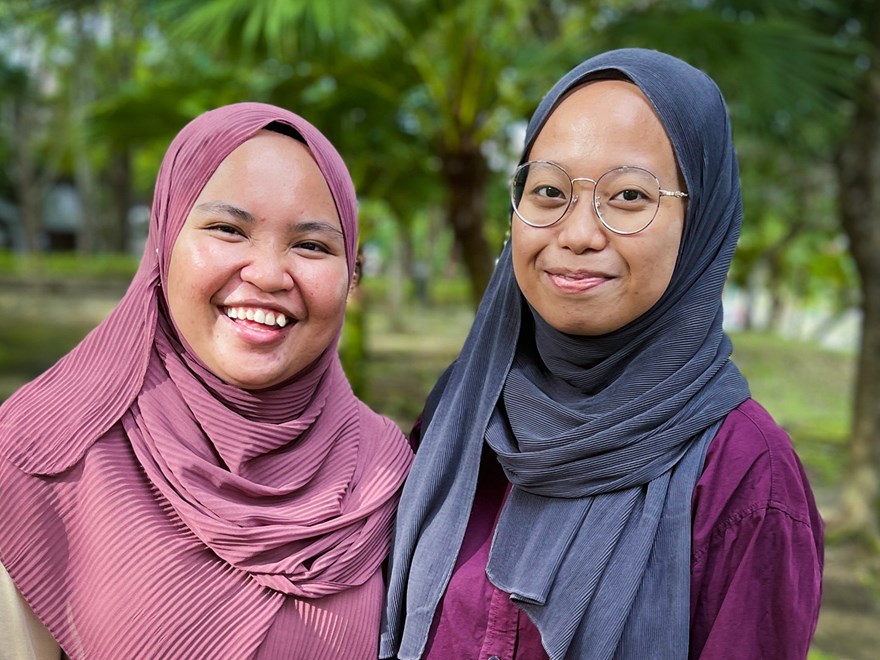INIKEA forest ranger Albert Lojingi and researcher Petter Axelsson (SLU), are measuring seedlings in an experiment where seeds from mother trees in dry and wet climates are planted in the same place to see what different characteristics they develop. Photo: Susanna Bergström, SLU

Large ants scurry up and down a tiny seedling. Gibbons call from everywhere and species such as banteng, wild buffalo, clouded leopard and the critically endangered helmeted hornbill have all been spotted live, on camera or audio recordings. Several of the fast-growing dipterocarp trees planted during the restoration have produced many new plants.
The forest is coming back to life. And thanks to this project the area is classified as a fully protected forest reserve.
So, what happens next? As well as continuing to build knowledge in this unique area, the whole team working on this considers it important to share the lessons learnt so far.
"To prevent further degradation and successfully restore forests, we need to learn from the few early efforts, such as this project", says Ulrik Ilstedt.

Background image: Linne Murang working in the nursery in Luasong.
Photo: Susanna Bergström, SLU
